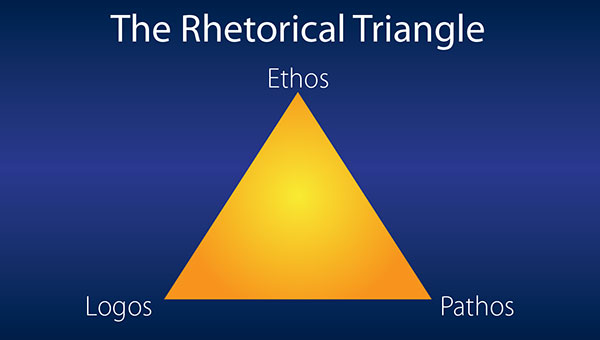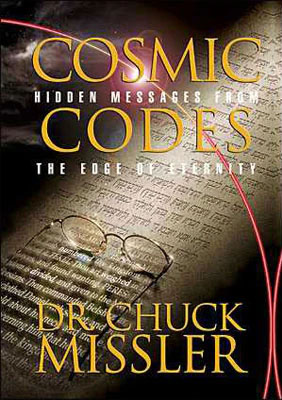In the appendix of his definitive work Cosmic Codes: Hidden Messages from the Edge of Eternity, Dr. Missler lists nearly two hundred rhetorical devices employed throughout the Holy Bible. Dr. Missler writes, “Many forms of multi-level and reflexive codes and rhetorical devices… are employed in communication and language, and the Biblical corpus of text is no exception.” He continues, “The exploitation of metaphors, analogies, similes and types in the Bible is particularly provocative in that they often reach across the individual authors and the era in which they were written.”[1]
But what of rhetoric? Aristotle defines rhetoric as the ability to see or identify in any given circumstance the available means of persuasion.[2] The rhetorician wants not merely to communicate a truth and sets the more ambitious goal to convince the hearer to act on that truth. Paul makes a distinction between “teaching” and “preaching” in Acts 15:35[3] which is echoed when he lists the various ministry titles in Ephesians 4:11. In this passage, the role of the “evangelist” is listed alongside that of the “teacher.” The distinction is intuitive if not explicitly stated — teaching explains and directs while preaching proclaims and motivates. Paul wrote to Timothy to “(p)reach the word (and) reprove, rebuke (and) exhort.”[4] Preaching incorporates these additional commitments above and beyond those of teaching. As a public school mathematics teacher of over twenty years, job one was to teach the skills and concepts of algebra, geometry and calculus. I measured successful learning through summative assessments. When a student pursued study in higher education in mathematics, I passed a much more exciting test. Could I move from just conveying knowledge to also exciting learning? When successful, students went from being taught mathematics to being caught by mathematics!
“General Grammar, Aristotelian Logic, and Classical Rhetoric comprise the first three rules-based subjects of the 7 Liberal Arts and Sciences. As these disciplines are learned and practiced together, they form the overarching, symbiotic system for establishing clarity and consistency of personal thought called the Trivium.”[5] The three tracks of the Koinonia Institute echo these three subjects: the Berean track comprises the basic Biblical knowledge of Jesus; the Issachar track aspires to develop within the learner the skills needed for understanding and discernment; and the Koinonos track ties it all together as students engage more completely in meeting the call known as the Great Commission.[6] The three subjects of the Trivium — Grammar, Logic and Rhetoric — parallel the three tracks of the Koinonia Institute — Berean, Issachar and Koinonos. And if this analogy is applicable, then rhetoric becomes a useful ally in fulfilling our call as ambassadors of the King of Kings and “making disciples of all nations… teaching them to obey everything I have commanded you.” We move from being merely able to recite truth to being able to reproduce disciples.

Aristotle wrote of what is called the Rhetorical Triangle — logos, ethos and pathos. Logos refers to the information and logic of the argument. This appeal is to the intellect. Relevant and reliable evidence is infused throughout an argument that answers the important questions and reaches valid conclusions. Ethos refers to the credibility of the speaker. What qualifies the speaker to know what he claims and what character traits inspire confidence that the speaker is honest and impartial in his assertions? Pathos refers to the audience and its shared values and emotional connection. Politicians and advertisers rely heavily on pathos when evoking an emotional news story or when using a cute animal to sell a product. An equilateral triangle often depicts this relationship and implies that each element should be present in roughly equal measure for a presentation to be more effective and persuasive.
Too much information can tire an audience — “the head can only absorb what the seat can endure!” Too much identification with the audience can come across as pandering and compromise the credibility of the speaker. The oft-quoted phrase “Nobody cares how much you know unless they know how much you care” comments on the relationship between logos and pathos. The Greek words serve as mnemonics for their respective meanings:
- Logos: The “words” which are spoken and the facts upon which they are based
- Ethos: The “ethics” of the speaker in terms of credibility and proficiency of the topic
- Pathos: The “sympathetic” connection with the readers or listeners which shows an understanding of where they are at in terms of predisposition and values
At our annual International Strategic Perspectives conferences held in Idaho, the selection of speakers and topics reflects all three elements. Each speaker brings something significant to say which “equips the saints for the work of the ministry.”[7] Speakers are proven leaders in the respective fields — archeology, eschatology, apologetics, print and electronic media, and so on. And a connection is made with the audience both through anecdotes and humor during the presentation and through individual interaction with the speakers at question and answer sessions and chance meetings in the hallways.
This concludes our three-part series on truth, evidence and rhetoric. To be a reproducer, we need to know the truth, be able to defend the truth and finally to communicate the truth. Saving faith is a reasonable faith.
“Come now, and let us reason together,” Says the Lord, “Though your sins are like scarlet, they shall be as white as snow; though they are red like crimson, they shall be as wool.”[8] We are commanded to reason whether or not it is a convenient time. “But sanctify the Lord God in your hearts, and always be ready to give a defense to everyone who asks you a reason for the hope that is in you, with meekness and fear.”[9] Time and again throughout the book of Acts, we read of people being persuaded (e.g., Acts 13:43, 14:19, 17:4, 18:4) along with some efforts which did not bear immediate results (e.g., Acts 17:5, 21:14 and especially 26:28.)
There is much to learn about ambassadorship by studying these verses and at least we can take away from the list the preeminence of persuasive preaching among the apostles as recorded in Acts. Time is short and we need to move from reciters to reproducers.
Notes:
- “The great discovery is that the Bible is a message system: it’s not simply 66 books penned by 40 authors over thousands of years, the Bible is an integrated whole which bears evidence of supernatural engineering in every detail!” https://6640.khouse.org/ ↩
- https://writing2.richmond.edu/writing/wweb/Rhet_Triangle.html ↩
- “Paul and Barnabas also remained in Antioch, teaching and preaching the word of the Lord, with many others also.” ↩
- 2 Timothy 2:4 ↩
- https://www.triviumeducation.com/ ↩
- Matthew 28:16–20 ↩
- Ephesians 4:12 ↩
- Isaiah 1:18 ↩
- 1 Peter 3:15 ↩



